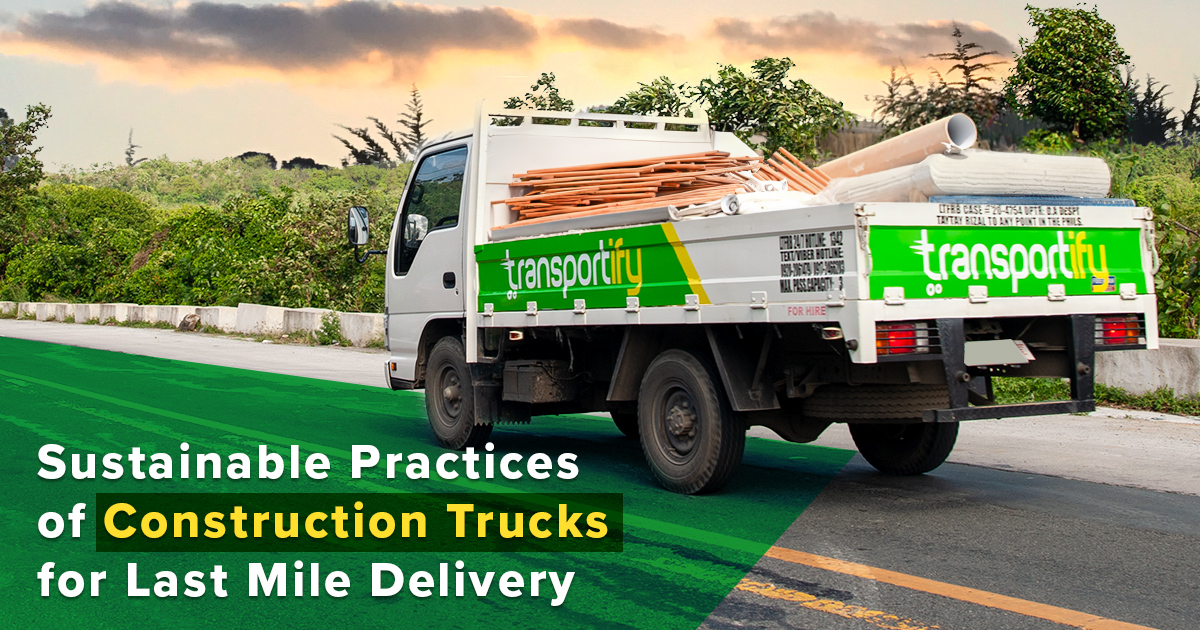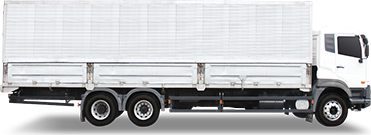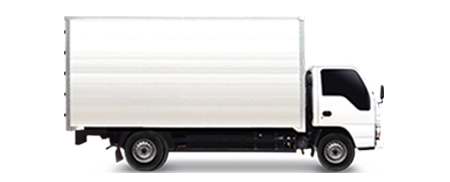
The Philippine construction industry is undergoing a major shift towards more sustainable and eco-friendly practices. Government infrastructure projects, especially in busy Metro Manila, are contributing to this larger sustainability drive. Initiatives like improving highways, bridges, and the ongoing construction of the long-awaited Metro Manila Subway are part of this transformation.
Construction trucks are at the forefront of this sustainability movement. As essential links in the supply chain for delivering of construction truck equipment and materials to sites, how this truck for construction delivery service operate has a big impact. This article explores how adopting sustainable practices for using construction trucks in last mile deliveries can provide significant benefits for the construction industry itself, the environment, and society as a whole. Implementing sustainability in construction company trucks holds great advantages.
The Need for Sustainable Last Mile Delivery Practices
The last mile delivery is known to be the most complex and costly part of the process. According to Forbes, this final leg accounts 53% of the total shipping cost and 41% of the overall supply chain cost. As cities continue to grow, the World Economic Forum reports that demand for last mile delivery services is expected to surge by 78% by the year 2030.
This dramatic increase would lead to 36% more delivery vehicles crowding the top 100 cities globally. If no improvements are made to make last-mile delivery more efficient, cost-effective, and sustainable, the World Economic Forum warns that carbon emissions from urban delivery traffic like Metro Manila could spike by as much as 32% by 2030. Clearly, addressing and optimizing last-mile delivery challenges is becoming crucial for economic and environmental reasons.
Ways to Make Sustainable Delivery Practices of Construction Trucks
Buy Materials at Construction Retail Stores Nearby
Instead of ordering from large regional warehouses far away, a better approach is to deliver using construction trucks directly from local retail stores or micro-fulfillment centers to your location. Micro-fulfillment centers are small warehouse facilities located in dense urban areas, putting inventory closer to the end customers.
This strategy of using local stores and urban micro-fulfillment sites enables faster and more environmentally-friendly last mile delivery operations among customers that support sustainable practices. According to Forbes report again that by 2025, utilizing these local fulfillment centers for last mile delivery could reduce delivery vehicle emissions by 17% to 26% compared to shipping from centralized warehouses. Having products positioned nearer to their final destination allows for more direct and eco-friendly transportation for that final leg of the delivery journey.
Trust Delivery Providers with Optimized Routes
One way to reduce driving times and distances for your delivery drivers is to optimize their routes using route planning software. Implementing route optimization technology can help identify the shortest and most cost-efficient routes for making all the deliveries. (Full disclosure: Transportify offers this type of route optimization feature, as do other providers.) To get to know more about what Transportify can offer to you, refer to the available vehicles and their corresponding rates.
| Vehicle Type | Dimensions/ Weight Limits | Base Price (Metro Manila) | Base Price (Outside Metro Manila) | Base Price (Visayas/Mindanao) |
|---|---|---|---|---|
 Wing Van Wing Van | 32 to 40 x 7.8 x 7.8 ft 12000kg to 28000kg | 7000 PHP | 6500 PHP | 6500 PHP |
| 18 x 6 x 7 ft 7000kg | 4850 PHP | 4850 PHP | 4850 PHP | |
 Closed Van Closed Van | 10 to 14 x 6 x 6 ft 2000kg to 4000kg | 1600 PHP | 1450 PHP | 1450 PHP |
 Open Truck Open Truck | 10 to 21 x 6 ft x open 2000kg and 7000kg | 2300 PHP | 1950 PHP | 1950 PHP |
 L300/Van L300/Van | 8 x 4.5 x 4.5 ft 1000kg | 415 PHP | 374 PHP | 335 PHP |
 Small Pickup Small Pickup | 5 x 5 ft x open 1000kg | 418 PHP | 338 PHP | 325 PHP |
| 5.5 x 3.8 x 3.8 ft 600kg | 375 PHP | 292 PHP | 275 PHP | |
| 5 x 3.2 x 2.8 ft 200kg | 240 PHP | 210 PHP | 160 PHP | |
| 3.5 x 2 x 2.5 ft 200kg | 220 PHP | 190 PHP | 140 PHP |
In addition to cutting overall delivery times, optimizing drivers’ routes smartly can also help lower emission levels. This is because the routing can be sequenced to group more drop-offs closer together, increasing the drop density per route. You can further reduce unnecessary driving between stops by ensuring a smoother overall process and streamlining communication among the delivery drivers, dispatchers, and recipients. Properly optimized routes make the entire last mile delivery operation more environmentally sustainable.
Let’s Get Digital
According to AMCS, the outcome of adapting to digitalization has been a powerful strategy for construction materials delivery by reducing up to 25% of CO2 emissions, mileage, hours driven, 10% of vehicles needed, and 75% of the planning time. While this improves 33% of customer service.
Both the two sustainable practices mentioned above are part of integrating digitalization in construction site trucks transport. The digital future holds great potential for revolutionizing how construction materials are transported in a more sustainable way. Digital platforms can help source construction materials from local suppliers, reducing the need for long-distance transportation and digital technologies allow refining delivery scheduling through predictive analytics and advanced route optimization algorithms.
Government Role in Sustainable Practices
Government policies and regulations are playing a major role for sustainability in the construction industry and transportation. By establishing clear guidelines and providing incentives for using green technologies, governments can significantly push the construction sector to adopt more sustainable practices.
This can involve offering subsidies to help construction companies switch to electric vehicle fleets. If too expensive to own a fleet, they can partner with on demand construction material delivery app like Transportify. With the right policies in place, governments have the ability to accelerate the construction industry’s adoption of environmentally-friendly operations and lower its overall environmental impact.
Understanding the Reality to Achieve Sustainability in Deliveries
While there are clear benefits to transitioning truck types construction operations like a pickup truck rental to be more sustainable, there are also several challenges to overcome. The upfront costs of investing in green technologies like electric vehicles can be quite high. Navigating and complying with environmental regulations is also complex. Additionally, educating consumers on the advantages of sustainable deliveries and managing their expectations is crucial for widespread adoption.
The journey towards sustainable last mile delivery of different types of trucks in construction requires a comprehensive approach – adopting electric trucks, using renewable energy, integrating digital innovations, and sourcing sustainable construction materials. While challenges exist, the construction industry’s commitment to sustainability promises environmental benefits but also operational efficiencies and cost savings over time.
 | or |




 INSTANT QUOTE
INSTANT QUOTE

 Chat
Chat